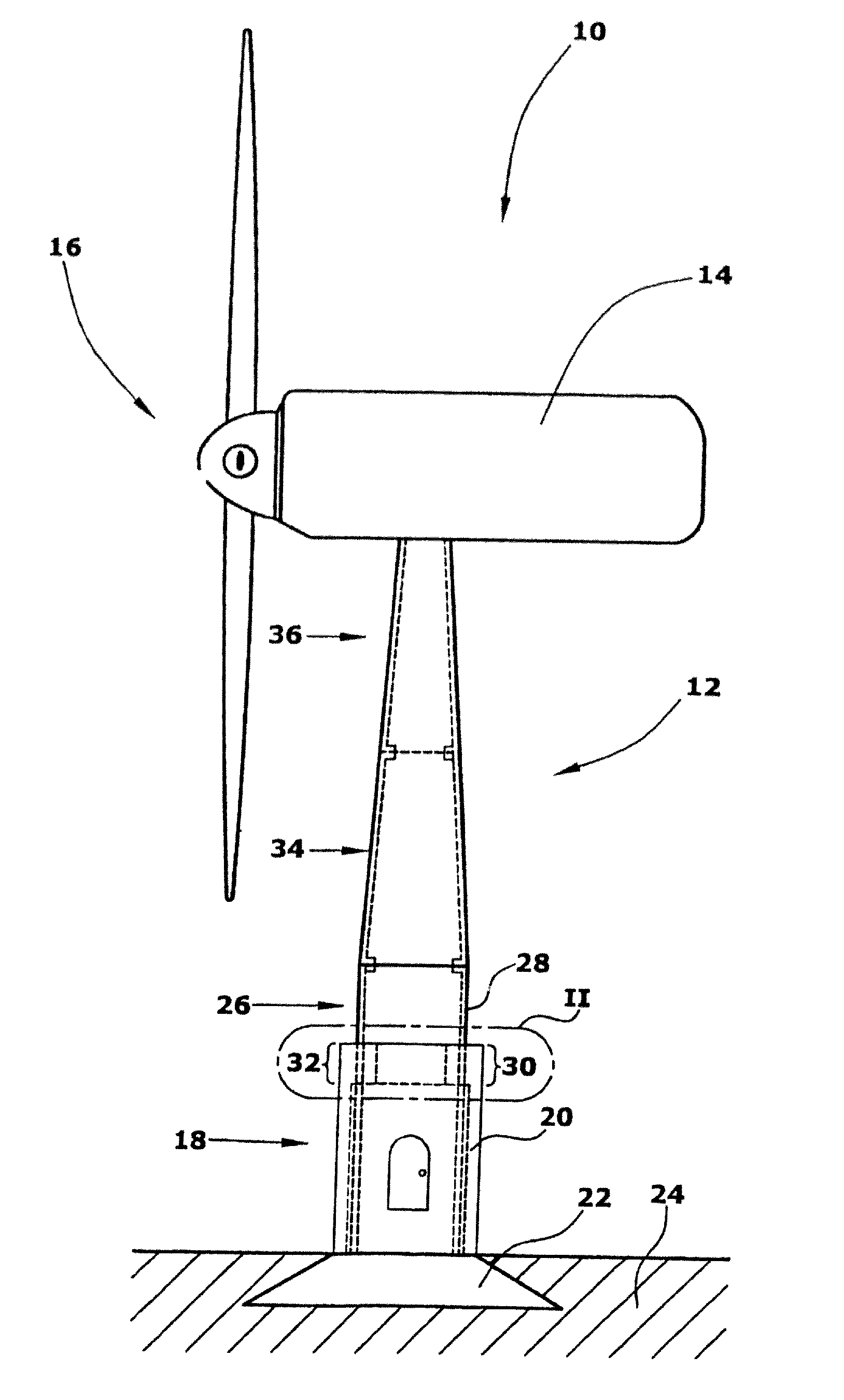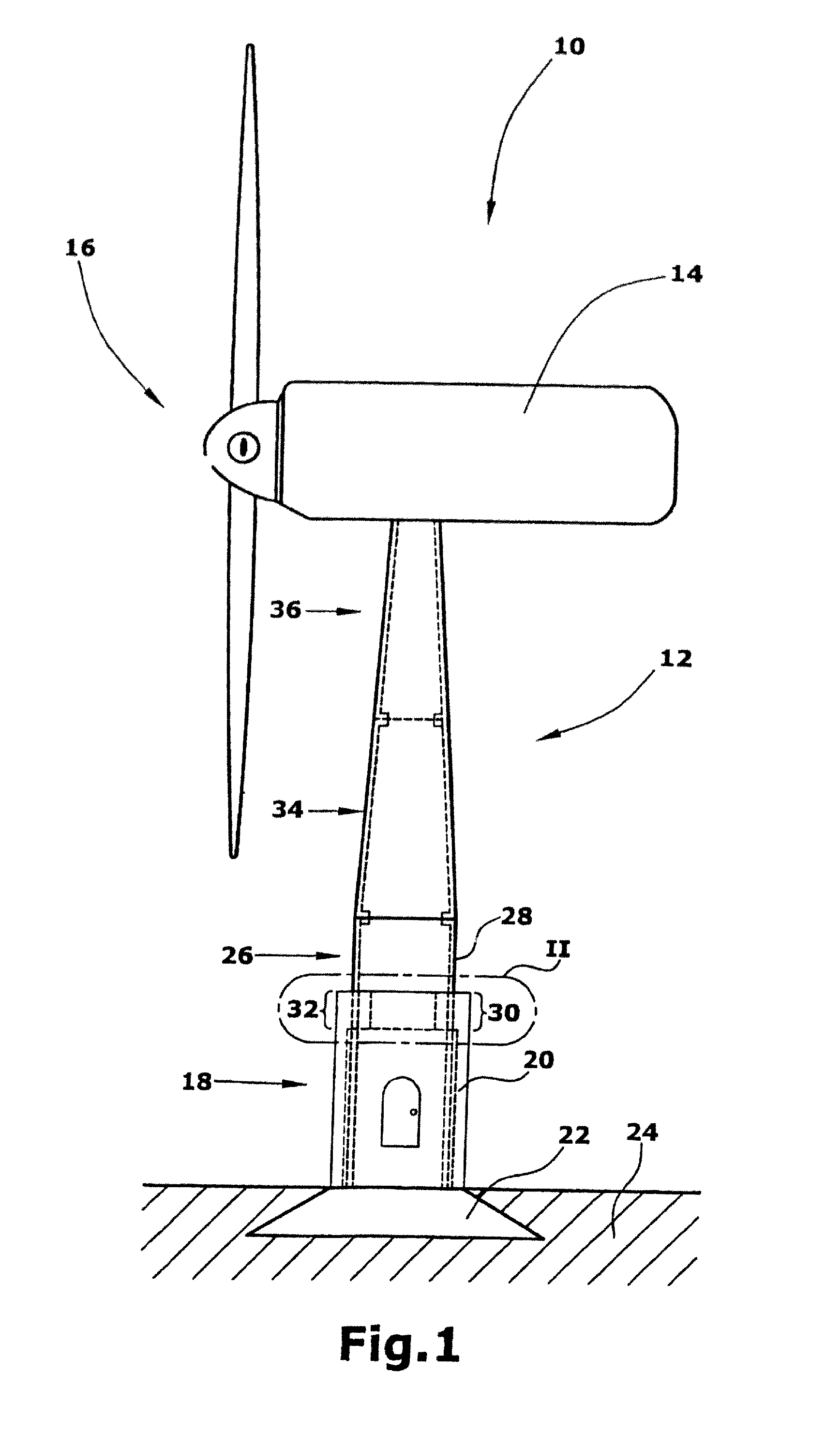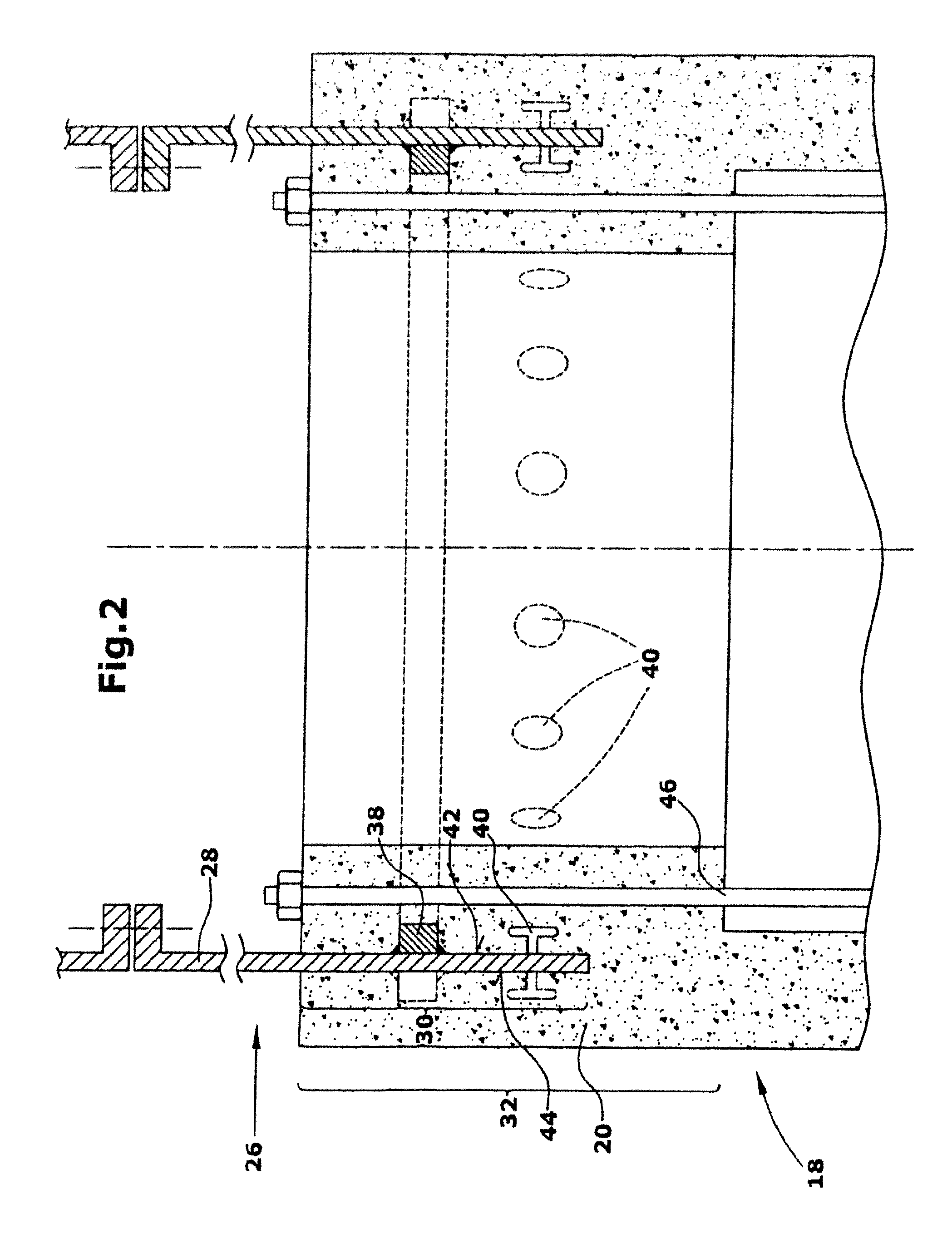Tower foundation, in particular for a wind energy turbine
a technology of towers and towers, applied in the field of hybrid towers, can solve the problems of increasing the height of the towers, difficult to seal the gap, and increasing the diameter of the rotor of wind energy turbines
- Summary
- Abstract
- Description
- Claims
- Application Information
AI Technical Summary
Benefits of technology
Problems solved by technology
Method used
Image
Examples
Embodiment Construction
[0030]FIG. 1 shows a side view of a wind energy turbine 10. The wind energy turbine 10 includes a tower 12 and a nacelle 14 rotatably arranged on top of the tower 12. The nacelle 14 is provided with a rotor 16 mounted rotatably around a horizontal axis. The nacelle 14 is mounted at the tower 12 while being rotatable around a vertical axis. Although in FIG. 1 a wind energy turbine 10 having a rotor being rotatable around a horizontal axis is shown, the present invention is not limited to such wind energy turbine designs but can also be used in connection with a wind energy turbine having a rotor being rotatable around a vertical axis.
[0031]As can be seen from FIG. 1, the tower 12 includes several tubular tower segments. Specifically in this embodiment, a first tower segment 18 including a wall 20 of concrete is arranged at the base portion of the tower 12. As shown herein, the first tower segment is tubular in shape. Moreover, the first tower segment 18 is provided with a foundation ...
PUM
 Login to View More
Login to View More Abstract
Description
Claims
Application Information
 Login to View More
Login to View More - R&D
- Intellectual Property
- Life Sciences
- Materials
- Tech Scout
- Unparalleled Data Quality
- Higher Quality Content
- 60% Fewer Hallucinations
Browse by: Latest US Patents, China's latest patents, Technical Efficacy Thesaurus, Application Domain, Technology Topic, Popular Technical Reports.
© 2025 PatSnap. All rights reserved.Legal|Privacy policy|Modern Slavery Act Transparency Statement|Sitemap|About US| Contact US: help@patsnap.com



